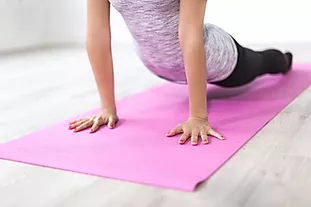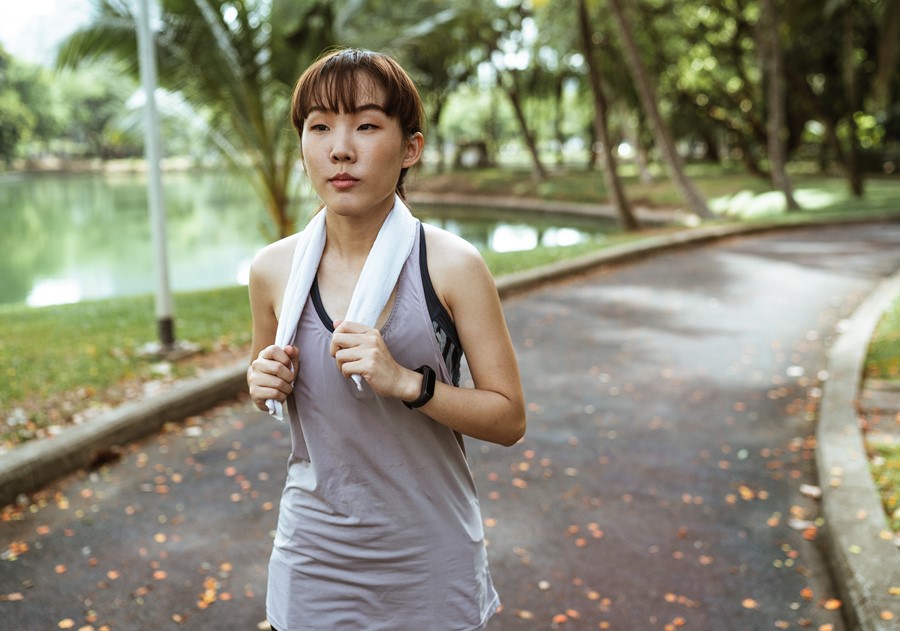
Our streets are silent, parks and playgrounds lie empty, and gym doors remain firmly shut. So how are we all staying active?
There’s a general feeling that there will be life before Covid-19, and life after. But what does this mean for the fitness industry? Will the way we workout change forever?
Rise of the Home Workout
With nearly two-thirds of the world’s gyms now closed, gym goers are looking for new ways to get their endorphin hit. At first, it might appear that many people aren’t staying active on lockdown, but look a little closer and you’ll see virtual armies of people, working out in front rooms and bedrooms, gardens and garages.
Whether it’s through Instagram live, YouTube videos, exercise apps or video group calls, home workouts have cemented themselves into the daily life of quarantine. PE with Joe Wicks has become a family favourite, with thousands of children and parents tuning in to the live PE class every morning on YouTube. It’s even prompted discussion over whether PE with Joe should continue when schools return.

In addition to these home workouts, there was a substantial increase in the sale of home gym equipment as the inevitable lockdown loomed. Everything from yoga mats to dumbbells, and exercise bikes to treadmills have seen a surge in demand. Couple that with the recent news that many gym and leisure centre bosses risk being evicted from their premises over non-payment of rent due to the crisis - and we could find that gyms up and down the country risk permanent closure within weeks. Which could leave the home workout as the best and in some cases, only option for staying fit.
So, when this is all over, where will home workouts sit on the scale when compared to a gym membership or class pass? There is no question that home workouts are a considerably cheaper way of staying active, but can digital fitness really replace the machine-packed, sweat-fest euphoria of a gym?
Fitness First Timers
Despite the quiet streets, you’ll still see plenty of runners and cyclists out and about, in pairs, or dodging their way around others. With exercise being one of just four ‘essential’ reasons that we should leave the house, there seems to be a new group of exercisers on the block. A recent Sport England survey found that nearly two thirds of adults consider exercise to be more important than ever during the crisis. So, although this ‘allocated activity’ feels abnormal, most of us are using this time to get up, get out and get active. Introducing the TV-watchers turned runners, parents turned PE teachers, and squabbling siblings turned cyclists.
The benefits that exercise can have on physical and mental health are vast. So, for the first timers and rallied returners, will coronavirus signal the start of a new enthusiasm for exercise? If so, should there be a collective effort to encourage more people to be active? And, can our national governing bodies find ways of making their sport more readily available when this is all over?
Perhaps more than ever, exercise suddenly feels more accessible to those who have never enjoyed it before. So, despite the huge number of negative impacts this virus is having, there is potentially a new wave of people, finding their feet in fitness.
Advancements in Active Ageing
With over 70s being asked to self-isolate for 12-weeks due to coronavirus, the daily lives and wellbeing of older people has suddenly and drastically changed. For many of them, the next couple of months will be challenging, whether they’re in their own homes or receiving care. An emphasis on active ageing at home has been addressed by many. Online videos guiding the elderly through safe chair exercises are readily available, and charities such as Age UK have dedicated advice on how to stay active at home during this pandemic. But when this is all over, will we see a surge in products, methods and means of getting more older people active?
For Rugged, this pandemic has stimulated a drive towards the further development of a specific home-based product, suitable for users of all ages and abilities. Combining physical activity and mental stimulation, our reaction trainer aims to improve the health and wellbeing of older adults, who are often restricted in their opportunities to be active.
Even after the worst of Covid-19 has passed, there will still be hundreds and thousands of older adults, limited in their ability to be active, but looking for a way to achieve it. A recent Active Lives survey found that nearly 50% of over 75s are classified as inactive – it’s this sector of our population we could all have the greatest effect on, it may just require a change in mindset of both the user and provider.
In Summary…
There continues to be a lot of uncertainty around the impact of Covid-19 on the fitness industry. But one thing is for certain; lockdown and isolation have highlighted the importance of staying active for the mind and body. For all of us. The way we workout may be evolving, with a new-found love and means of bringing fitness into the home. And it certainly feels like there’s a unique opportunity to get more of the population, regularly exercising for the long term. We just need people out there to seize it.
By Simon Heap, Creative Director
I designed the Pro-X Elite as the ultimate solution to a problem that I’d begun…
All movement matters. Whether it’s walking up the stairs rather than cruising up in a lift, a lunchtime jog rather…
Welcome back to our ‘Best For’ series where we highlight some of our best picks for your indoor adventure centre.…


